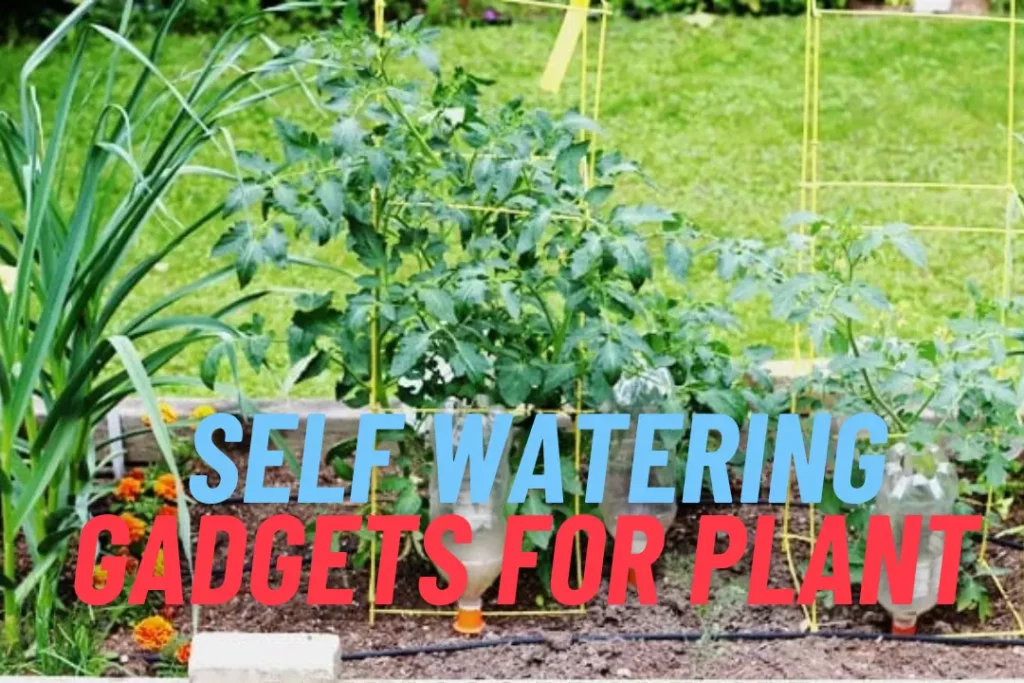
Introduction
Table of Contents
In today’s fast-paced world, caring for our beloved houseplants can often take a back seat. With busy schedules and different weather conditions, making sure that our plants receive the right amount of water can be a bit challenging.
This is where self-watering gadgets come to the rescue, promising to advance plant care as we know it. In this comprehensive guide, we will dive into the world of self-watering gadgets for plants, exploring their benefits, types, how they work, and tips for choosing the right one for your baby-like plants.
The Benefits of Self-Watering Gadgets
- Consistent Moisture Levels: Self-watering gadgets provide a consistent and controlled supply of water to your plants. This helps maintain required moisture levels, preventing both under-watering and over-watering, which are common causes of plant stress and damage.
- Time and Effort Savings: With self-watering gadgets, you can say goodbye to the hectic daily watering routines. These gadgets are designed to keep your plants hydrated for longer periods, allowing you to enjoy your plants’ growth without the constant worry of watering.
- Travel-Friendly: For frequent travelers or those who are away from home, self-watering gadgets serve as lifesavers. They can keep your plants healthy even in your absence, allowing them to thrive regardless of your schedule.
- Promotes Root Health: Proper hydration is crucial for root health. Self-watering gadgets deliver water directly to the root zone, encouraging great root growth and overall plant health.
Types of Self-Watering Gadgets
- Wicking Systems: Wicking systems consist of a reservoir of water connected to the plant’s soil through a wick. The plant absorbs water from the wick as needed, ensuring a steady supply. This low-tech solution is great for small potted plants.
- Aqua Globes: Aqua globes are glass bulbs with a long neck that you fill with water and insert into the soil. As the soil dries out, water is released from the globe into the soil. These decorative gadgets are suitable for both indoor and outdoor plants.
- Self-Watering Planters: These planters have a built-in water reservoir beneath the soil. The plant’s roots draw water from the reservoir through capillary action, maintaining consistent moisture levels. Self-watering planters come in various sizes and are ideal for a wide range of plants.
- Drip Irrigation Systems: More advanced, drip irrigation systems use a network of tubes and emitters to deliver water directly to the plant’s root zone. These systems can be automated and are suitable for larger indoor plant collections or outdoor gardens.
- Smart Self-Watering Devices: Leveraging technology, smart self-watering devices can be controlled through mobile apps. They provide customizable watering schedules, ensuring that your plants receive water precisely when they need it.
How Self-Watering Gadgets Work
The working principle of self-watering gadgets varies based on their type. However, the common goal is to maintain consistent soil moisture. For instance:
- Wicking Systems: The wick draws water from the reservoir into the soil through capillary action, mimicking how plants naturally absorb water.
- Aqua Globes: As the soil dries out, air is drawn into the globe, allowing water to gradually seep into the soil. This maintains moisture levels without overwhelming the plant with excess water.
- Self-Watering Planters: These planters use a wicking or capillary action to transport water from the reservoir to the soil. The plant’s roots access the water as needed.
- Drip Irrigation Systems: Using a network of tubes, water is delivered drop by drop to the root zone. Some systems can be set on timers or moisture sensors for precision watering.
- Smart Devices: These gadgets employ sensors to measure soil moisture levels and, based on your settings, release water accordingly. Some devices can even consider weather forecasts to adjust watering schedules.
Choosing the Right Self-Watering Gadget
- Plant Type: Consider the type of plants you have. Different plants have varying water requirements, and choosing a gadget that suits their needs is essential.
- Pot Size: The size of your plant’s container matters. Smaller gadgets like wicking systems or aqua globes are suitable for small pots, while larger planters or drip systems are better for bigger containers.
- Indoor vs. Outdoor: Some gadgets are better suited for indoor use, while others are designed to withstand outdoor conditions. Choose accordingly.
- Level of Automation: Decide how much control you want. Basic gadgets might offer manual filling and monitoring, while smart devices can be controlled remotely with advanced scheduling options.
- Budget: Self-watering gadgets come in a range of prices. Consider your budget and how many plants you need to care for.
Conclusion
The world of plant care is changing, and self-watering gadgets are leading this transformation. These ingenious devices offer a solution to the challenges of maintaining consistent plant hydration, catering to both novice and seasoned plant enthusiasts.
From wicking systems to smart devices, the options are great and diverse, allowing you to choose the perfect gadget to fit your needs and lifestyle. adopt this technology, and watch your plants flourish and grow as they receive the care they deserve with the help of self-watering gadgets.

